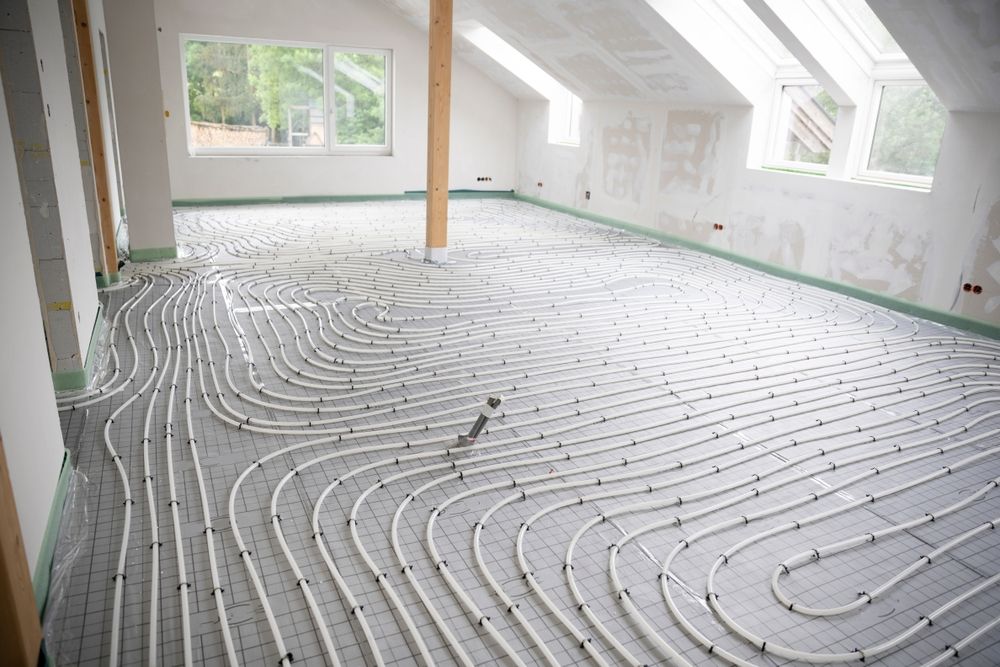The concept of adding heated floors to your home may feel like a luxury reserved for upscale residences or high-end bathrooms. However, technological advances and growing accessibility have made radiant floor heating increasingly popular for a wide range of homeowners. Before investing in this particular enhancement, it’s crucial to weigh the pros and cons to determine if heated floors align with your needs and lifestyle.
Understanding Heated Floors
At its core, heated flooring involves a system where advanced heating technology is installed beneath your floor to generate a consistent level of warmth throughout a space. This form of heating is commonly referred to as radiant floor heating. There are primarily two types available: electric radiant floors and hydronic radiant floors.
Electric radiant systems use electric cables or heated mats to produce warmth, while hydronic systems employ tubes that carry heated water beneath the floor surface. Each type offers distinct benefits and challenges, and selecting the right one will often depend on factors such as climate, the size of the area you want to heat, and your budget constraints.
The Advantages of Installing Heated Floors
- Comfort and Even Heating: The most compelling reason many homeowners opt for heated floors is the unparalleled comfort they provide. Unlike traditional heating systems, which can generate uneven warmth and leave certain areas of a room cooler than others, radiant floor heating ensures consistent heat distribution across the entire floor. This translates to a warmer feet sensation and a more uniform room temperature.
- Energy Efficiency: Radiant floor heating is highly efficient, primarily because it minimizes energy loss. Traditional heating systems like forced-air can lose a significant amount of heat as it travels through ductwork or into the colder zones near ceilings. Heated floors distribute warmth directly to the area where it is most needed, reducing wasted energy. Many homeowners report reduced heating bills after switching to radiant floor systems.
- Silent Operation: Unlike noisy radiators or humming HVAC systems, radiant floor heating operates silently. The absence of noisy fans or circulating air systems contributes to a more tranquil living environment.
- Improved Air Quality: Traditional forced-air heating can circulate dust, allergens, and other pollutants through the air, exacerbating allergies and respiratory conditions. Radiant floor heating systems, on the other hand, do not circulate air and thus leave indoor air quality undisturbed.
- Space Efficiency: With no radiators, ducts, or vents to consider, you have more freedom when arranging rooms. This can be particularly advantageous in smaller spaces where every inch of usable space counts.
- Aesthetic and Versatile: Heated floors are out of sight and can be installed beneath various flooring materials, including tiles, hardwood, laminate, and even some types of carpet. This allows homeowners to maintain their style preferences and choose flooring options that fit their tastes without compromising functionality.
The Drawbacks of Installing Heated Floors
- Installation Costs: One of the significant downsides is the initial cost of installing heated flooring. The process can be labor-intensive and often requires professional installation, which can add to the expense. Costs can vary widely depending on the type of system and the size of the area being heated, but it’s usually higher than traditional heating solutions.
- Installation Complexity: Retrofitting installed floors with radiant heating can be complex. It often requires removing the existing flooring, adding extra layers, and making necessary adjustments that may increase installation time and expense. Therefore, it’s typically easier and more cost-effective to install radiant floors in new build projects or during a major renovation.
- Floor Height Changes: Installing a radiant heating system can add slightly to the floor height, which may require adjustments to doors, thresholds, or baseboards. This is especially true with hydronic systems, which involve adding layers under the floor surface. Homeowners need to consider whether these modifications could affect the aesthetics or functionality of the space.
- Repair and Maintenance: While radiant floor systems are known for their durability, repairs, when needed, can be challenging and costly. If an issue arises, accessing and fixing any problematic sections may require lifting or removing parts of the flooring. This complexity highlights the importance of proper installation and choosing quality materials to reduce the likelihood of future issues.
- Heating Response Time: One minor disadvantage is that radiant floor systems can take a bit longer to heat a room compared to traditional systems, which can be instantly turned on. This means that preplanning the heating schedule is essential to ensure desired warmth when needed.
- Not Ideal for All Climates: In temperate zones where there are mild winters, the cost and effort to install a radiant heating system may not outweigh the benefits if they’re only needed for a short period each year. Homeowners in colder climates tend to see greater returns on investment.
Factors to Consider
Before deciding to install heated floors, there are several factors that homeowners should consider to discern if it’s the right choice for their home:
- Budget: Evaluate the initial installation costs along with potential energy savings over time. Consider the probability and cost of future maintenance or repairs.
- Intended Use: Decide whether you want to install heated floors in specific areas (like bathrooms or kitchens) or throughout the entire house. Personal comfort and specific needs can guide which parts of the home will benefit the most.
- System Type: Research whether an electric or hydronic system would better suit your home. Electric systems might be more cost-effective for small areas, while hydronic systems tend to work well in larger spaces or colder climates.
- Professional Help: Professional installation is recommended given the complexity of installation and the potential for serious issues if the system is improperly installed.
- Home Infrastructure: Consider if your current home structure can accommodate the system without significant structural alterations which may drive up costs.
Radiant floor heating offers a blend of comfort, efficiency, and luxury that appeals to many homeowners. Yet as with any home improvement project, it is not a one-size-fits-all option. Understanding both the benefits and limitations of heated floors will ensure a sound and satisfying investment.
Lastly, utilizing the assistance of experienced professionals can provide guidance through every phase of the process, from initial planning and budgeting to installation and ongoing maintenance, allowing you to enjoy the many benefits of heated floors to the fullest extent possible. Whether you’re renovating or building from scratch, factoring in a radiant floor system might just add that perfect touch of warmth and efficiency to your home.



